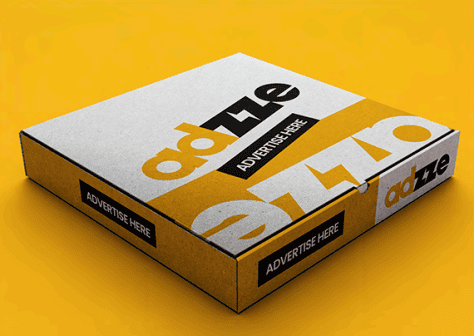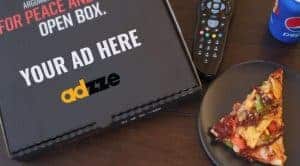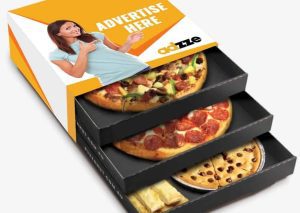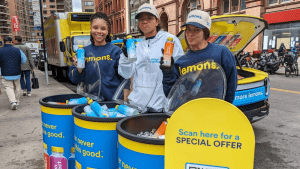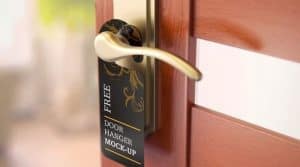In an era dominated by digital advertising, marketers are seeking innovative solutions to connect offline strategies with online campaigns effectively. Enter Box Topper Advertising, a physical medium that delivers messages directly into consumers’ hands. By integrating this approach with digital campaigns, brands can unlock a powerful, fraud-resistant, and measurable advertising method.
This blog explores how Box Topper Advertising can complement digital campaigns, enhance tracking capabilities, and optimize overall marketing effectiveness. We’ll dive into strategies, examples, and best practices to help marketing professionals harness the full potential of this creative advertising tactic.
Why Box Topper Advertising Matters 
Box topper advertising involves placing promotional messages, offers, or interactive elements on packaging, such as pizza boxes, e-commerce deliveries, or subscription service shipments. It offers unique benefits:
1. Guaranteed Visibility: Unlike digital ads that risk being blocked or ignored, box toppers physically reach the consumer.
2. Tactile Engagement: The physical presence of box toppers makes them memorable and creates an emotional connection with the audience.
3. Enhanced ROI: When combined with digital tools, box topper advertising becomes trackable, offering clear metrics to measure campaign success.
The Power of Integrating Box Topper Advertising with Digital Campaigns
Combining box topper advertising with digital campaigns bridges the gap between offline and online marketing efforts. Here’s how:
1. QR Codes for Instant Engagement
Box toppers can feature scannable QR codes that direct consumers to:
Product landing pages.
Exclusive offers or discounts.
Interactive content like videos or games.
Example: A fitness app uses QR codes on meal delivery boxes to offer a free trial. Scanning the code takes users directly to the app’s sign-up page.
2. Personalized URLs for Tailored Experiences
Including personalized URLs (PURLs) on box toppers enables brands to deliver customized content based on user preferences or purchase history.
Example: An e-commerce platform prints unique URLs on shipping boxes that lead customers to a curated shopping page featuring recommended products.
3. Augmented Reality (AR) Experiences
Augmented reality transforms box toppers into interactive platforms. Consumers can use their smartphones to unlock immersive experiences by scanning AR markers.
Example: A movie streaming service places AR codes on pizza boxes that play exclusive trailers or bonus content when scanned.
4. Social Media Integration
Encouraging consumers to share their box topper experiences on social media amplifies the campaign’s reach organically.
Example: A skincare brand asks customers to post pictures of their creative box toppers using a branded hashtag, offering a chance to win free products.
Key Benefits of Integration
1. Better Targeting and Personalization
Box topper advertising enables hyper-targeting by linking offline efforts to online behavior. Digital tools like geofencing and retargeting enhance campaign relevance.
2. Enhanced Data Collection 
Trackable elements like QR codes and PURLs provide valuable insights into consumer engagement and behavior, helping brands refine their strategies.
3. Combatting Ad Fraud
Box topper advertising is a fraud-resistant medium, and its integration with secure digital tools ensures that impressions and engagements are genuine.
4. Cross-Channel Synergy
Seamless integration of offline and online campaigns reinforces brand messaging across multiple touchpoints, creating a cohesive customer journey.
Use Cases: Successful Integration of Box Topper Advertising
1. E-Commerce Retailer Drives Repeat Purchases
Objective: Boost customer retention and repeat purchases.
Strategy: Printed box toppers on e-commerce deliveries with QR codes offering loyalty rewards.
Included personalized thank-you messages and discount codes.
Results: 25% increase in repeat purchases within two months.
Higher customer satisfaction ratings due to the personalized touch.
2. Food Delivery Service Promotes New Offerings
Objective: Increase awareness of seasonal menu items.
Strategy: Partnered with local restaurants to feature AR-enabled box toppers showcasing the new menu.
AR experiences included recipe tips and behind-the-scenes content.
Results: 35% uptick in orders for the promoted items.
Positive customer feedback on the interactive experience.
3. Subscription Box Company Enhances Customer Engagement
Objective: Encourage social media sharing and brand advocacy.
Strategy: Designed visually stunning box toppers with a branded hashtag and social media contest.
Offered a free subscription box to participants who posted photos.
Results: 15% increase in social media followers.
Organic reach tripled due to user-generated content.
Best Practices for Integrating Box Topper Advertising
1. Align Messaging Across Channels
Ensure that your box topper advertising aligns with the messaging in your digital campaigns for consistency and clarity.
2. Focus on Design 
Make your box toppers visually appealing and easy to understand. Bold colors, clear CTAs, and scannable elements are key.
3. Optimize for Mobile
Since many consumers will engage with digital elements via smartphones, ensure that landing pages and interactive features are mobile-friendly.
4. Test and Iterate
Run A/B tests to determine what designs, offers, or CTAs resonate most with your audience. Use insights to optimize future campaigns.
5. Track Performance
Measure metrics like QR code scans, website visits, and conversion rates to evaluate the campaign’s success and ROI.
The Future of Box Topper Advertising in a Digital World
As digital marketing becomes increasingly competitive, integrating physical and digital strategies like box topper advertising offers brands a distinct advantage. The tactile nature of box toppers ensures high visibility, while digital tools provide the measurability and engagement needed for modern campaigns.
Box topper advertising is no longer just about delivering static messages; it’s about creating dynamic, interactive experiences that connect offline engagement with online action. By integrating QR codes, personalized URLs, and AR features, brands can enhance their campaigns, track performance, and achieve measurable success.

